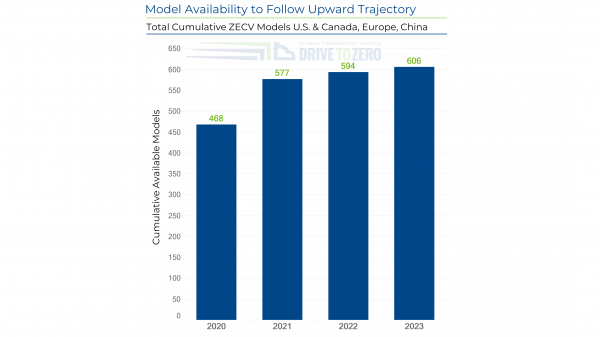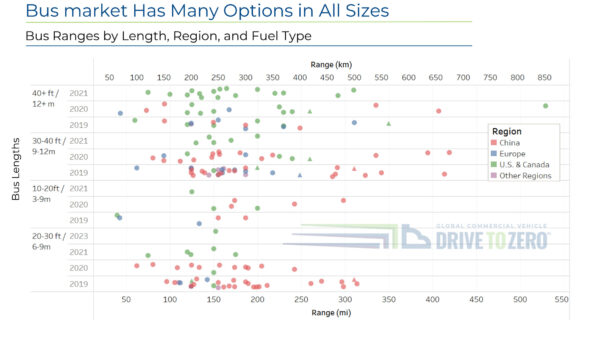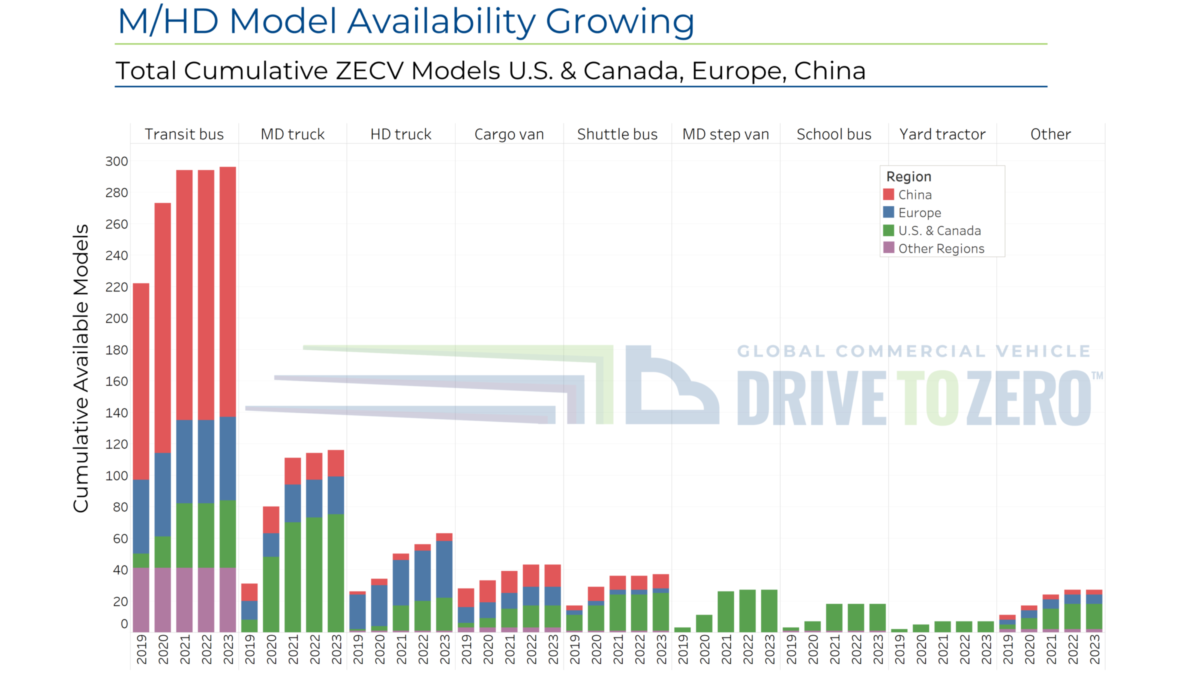

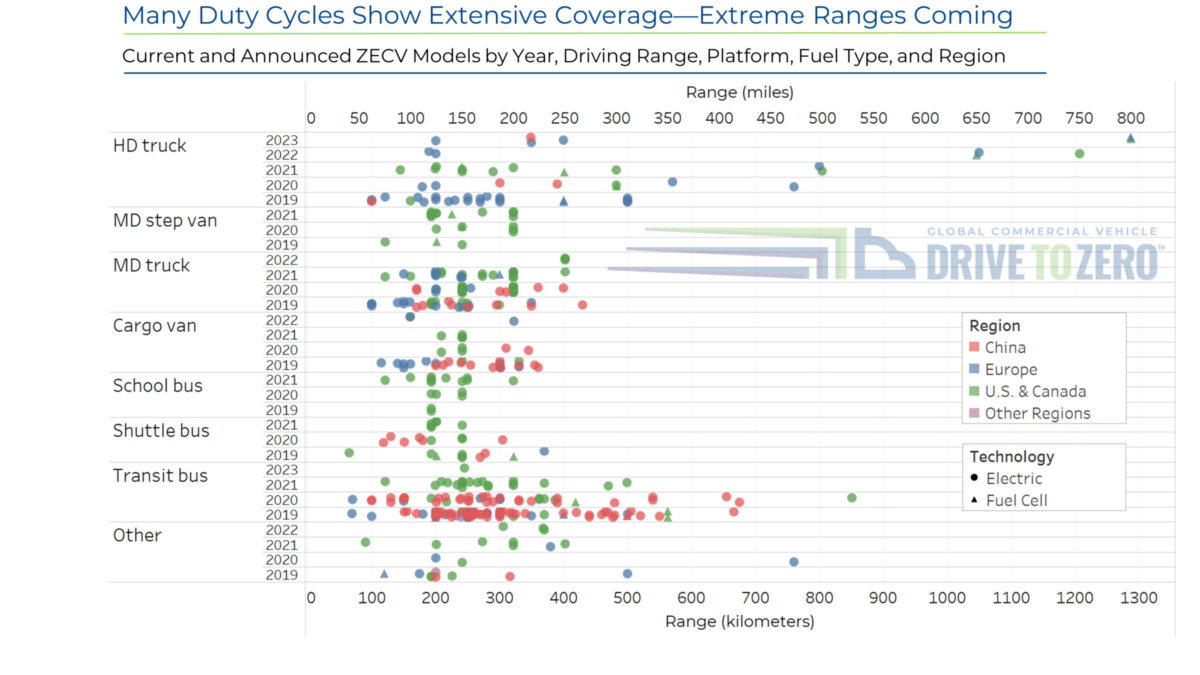
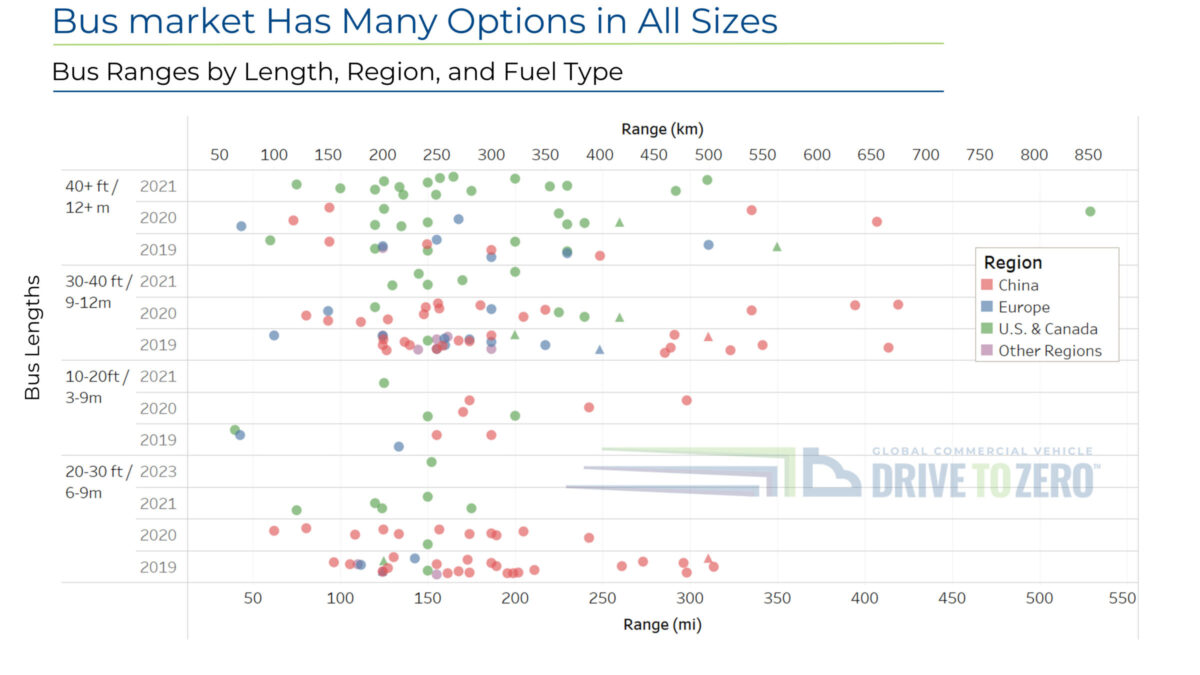
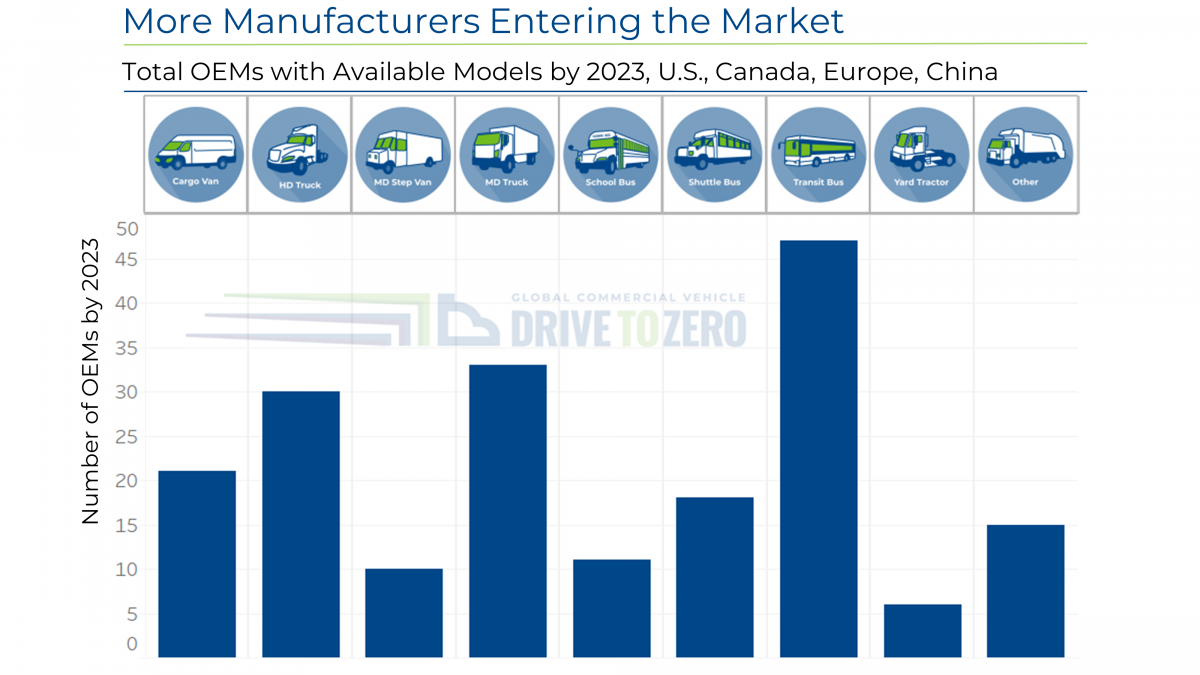
M/HD Model Availability Growing
About the Results
The number of available and announced models of zero-emission (ZE) heavy-duty trucks in the United States, Canada, Europe and China is projected to rise nearly 80 percent from 2020 to 2023 (40 to 71) – outpacing previous growth projections.
“The pace of battery technology advancement is happening faster than we thought and battery costs are also dropping faster than anticipated. As a result, newly available zero-emission trucks generally and heavy-duty zero-emission trucks in particular are shifting toward commercialization at an accelerating pace,” said Dr. Cristiano Façanha, Global Director of CALSTART’s Global Commercial Vehicle Drive to Zero (Drive to ZeroTM) program and campaign.
“This data demonstrates model availability for zero-emission heavy-duty trucks is improving rapidly. National climate action plans can and should reflect this new reality by setting strong manufacturing, adoption and incentives for zero-emission trucks and infrastructure,” said Dr. Façanha.
Model Availability to Follow Upward Trajectory
About the Results
The number of available and announced models of ZE trucks and buses globally is projected to rise nearly 30 percent from 2020 to 2023.
A mix of market demand, policy drivers and an increasingly attractive business case are driving model proliferation through strong market signals to manufacturers and fleets. Market driving regulations and incentive programs include California’s Innovative Clean Transit Rule, Advanced Clean Trucks Rule (ACT), the Hybrid and Zero-Emission Truck and Bus Voucher incentive Project (HVIP), New York’s Truck Voucher Incentive Program, and Quebec’s Écocamionnage Program. In addition, Low Carbon Fuel Standards (LCFS) can generate credits to help accelerate payback periods for ZE powertrain systems in California, Oregon, and British Columbia. The national government of Canada is developing a Clean Fuel Standard to be applied in all provinces.
Decreasing technology and electricity costs also contribute to cost parity and drive model proliferation. Battery pack prices in 2019 were at $156/kWh according to Bloomberg New Energy Finance. BNEF projects prices will fall even lower to $100/kWh by 2023. In addition, electricity prices are significantly less volatile than petroleum prices allowing fleets to plan and account for future energy costs more accurately.
Many Duty Cycles Show Extensive Coverage — Extreme Ranges Coming
About the Results
Most zero-emission commercial vehicle (ZECV) models have driving ranges that are commensurate with user needs. Most existing ZE trucks are able to drive 80-240 kilometers (about 50-150 miles) on a single charge, typically sufficient for urban deliveries and other fixed-route uses.
In 2021, a few available for purchase ZE trucks had maximum ranges of around 600 kilometers (about 370 miles), well above what is needed on a day-to-day basis. ZE heavy-duty trucks with longer ranges of more than 1,000 kilometers (about 620 miles) are coming to Europe and North America in 2022 and 2023.
Manufacturers like BYD, Volvo, Daimler and Lion all leveraged leading zero-emission bus powertrain technology to aid commercialization for ZE truck platforms, which share much of the same core componentry, aligning with the technology transfer strategy outlined in Drive to Zero’s Beachhead Strategy.
Bus Market Has Many Options in All Sizes
About the Results
Most zero-emission buses can drive between 160-320 kilometers (about 100-200 miles) on a single charge – a range that is sufficient for most transit operations. Some buses available in China (and one in North America) boast ranges of more than 500 kilometers (about 300 miles).
The greatest driving range is found in the 30-40+ feet segment, which includes the standard transit bus size of 40 feet in the United States.
The lowest ranges are found in autonomous units.
More Manufacturers Entering the Market
About the Results
Manufacturers are getting clear market and policy signals from leading edge regions that fleets want these vehicles and are progressively recognizing the opportunity that zero-emission commercial vehicle production can bring.
“BYD is pleased to see CALSTART taking the lead in publicizing the breadth of medium- and heavy-duty electric vehicles currently available for sale in the US and across the globe,” said Stella Li, President of BYD Motors, Inc. “Electrifying commercial vehicles will continue to play a critical role in reducing the climate change and air quality impacts of the transportation sector; BYD is proud to support and partner with CALSTART in working towards that goal.”
Interested in comparing past ZETI Analytics data? Visit the ZETI Analytics Archive.


